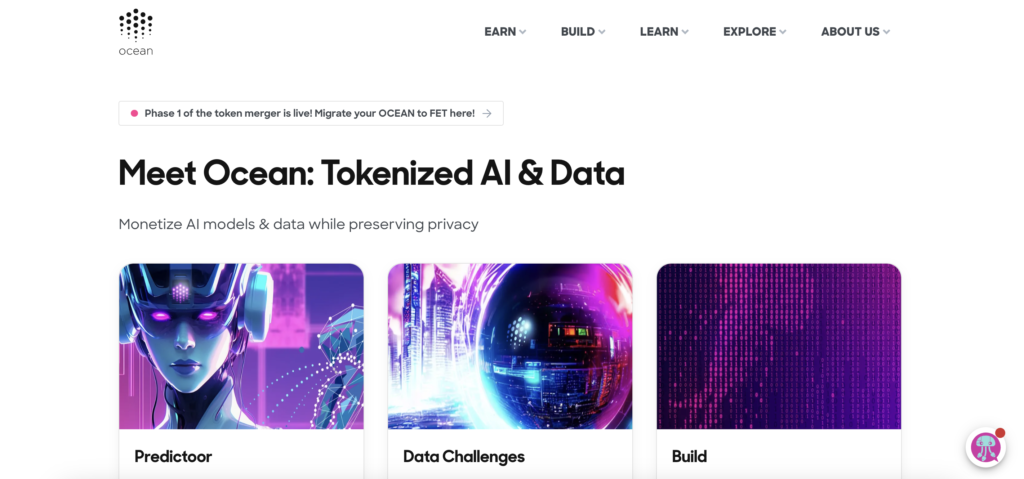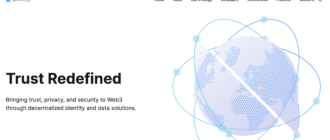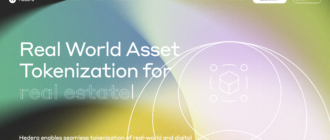This article delves into the Ocean Protocol project and its associated cryptocurrency, OCEAN. It aims to provide a comprehensive overview of the project’s objectives, technological infrastructure, tokenomics, ecosystem, and future prospects. Readers will gain an understanding of how Ocean Protocol leverages blockchain technology to revolutionize data sharing and monetization, making data more accessible and secure for various stakeholders. We will also explore the unique features and mechanisms that distinguish Ocean Protocol in the competitive landscape of decentralized data marketplaces.

What is Ocean Protocol?
Ocean Protocol is a decentralized data exchange protocol that leverages blockchain technology to facilitate secure and transparent data sharing and monetization. Designed to empower data owners and consumers, Ocean Protocol aims to unlock the value of data by enabling it to be shared and traded in a trusted environment. The platform uses data tokens, which are ERC-20 tokens, to represent data assets, allowing data to be treated as a liquid asset. This tokenization of data not only enhances privacy and security but also creates new revenue streams for data providers. Ocean Protocol’s core objective is to democratize data access, making it easier for individuals, businesses, and AI models to access valuable data without compromising privacy.
History of Ocean Protocol
Ocean Protocol was founded to address the growing need for a decentralized data marketplace that ensures privacy, security, and equitable data sharing. The project was initiated in 2017, and its development has been marked by several key milestones:
- 2017: Conceptualization and initial development began with the aim of creating a decentralized data exchange protocol.
- 2018: The Ocean Protocol whitepaper was published, outlining the project’s vision, technology, and goals. The same year, the project raised funds through a successful token sale.
- 2019: Ocean Protocol launched its first version (V1) on the Ethereum mainnet, introducing data tokens and the initial framework for data exchange.
- 2020: The project introduced Ocean Market, a decentralized marketplace for buying and selling data assets. This release also included significant upgrades to the protocol, improving scalability and security.
- 2021: Ocean Protocol continued to enhance its platform with the introduction of Compute-to-Data, a feature that allows data to be analyzed without being moved, thus preserving privacy.
- 2022: The protocol saw increased adoption and integration with various AI and data science platforms, expanding its ecosystem and use cases.
- 2023: Continued improvements and partnerships bolstered the platform’s capabilities, making it a key player in the decentralized data economy.
Throughout its history, Ocean Protocol has remained committed to its mission of enabling a more equitable and efficient data economy, continually evolving its technology to meet the needs of its users.
How Ocean Protocol Works
Ocean Protocol operates on a sophisticated technological stack designed to facilitate secure and decentralized data sharing. At its core, the protocol utilizes blockchain technology to tokenize data assets, ensuring that data can be securely traded while maintaining privacy and control for data owners.
Key Technologies and Their Roles
- Data Tokens (ERC-20 Tokens): Data tokens represent data assets on the Ocean Protocol. Each dataset is tokenized into ERC-20 tokens, which can be bought, sold, and traded like any other cryptocurrency. This tokenization allows data to be treated as a liquid asset, enabling new financial models and revenue streams for data providers.
- Compute-to-Data: This innovative feature allows data computations to occur where the data is stored, without moving the data itself. This means that sensitive data can be used for analytics and AI model training without exposing the raw data, preserving privacy and security.
- Decentralized Marketplaces: Ocean Protocol enables the creation of decentralized data marketplaces where data assets can be published and traded. These marketplaces are powered by smart contracts, which automate transactions and ensure trustless interactions between buyers and sellers.
Blockchain and Consensus Mechanism
Ocean Protocol is built on the Ethereum blockchain, leveraging its robust infrastructure and security features. The protocol uses Ethereum’s established consensus mechanism, Proof of Stake (PoS), which involves validators who stake their tokens to propose and validate new blocks. This mechanism is energy-efficient and aligns with Ethereum’s transition from Proof of Work (PoW) to PoS, reducing the environmental impact and enhancing scalability.
Technical Details
- Smart Contracts: Ocean Protocol employs a series of smart contracts to handle various functions such as data token issuance, marketplace transactions, and staking. These contracts are programmed to enforce the rules and automate processes, ensuring efficiency and security.
- Ocean Market: This is the primary interface for users to interact with the protocol. It allows users to publish datasets, set prices, and manage their data tokens. The market also includes liquidity pools, where users can stake their OCEAN tokens to earn rewards and provide liquidity for data token transactions.
- Security and Privacy: The protocol uses advanced encryption techniques to secure data on the blockchain. Additionally, the Compute-to-Data feature ensures that data privacy is maintained by allowing computations to be performed on encrypted data without exposing it.
Distinctive Features
Ocean Protocol stands out from other data-sharing platforms due to its unique combination of blockchain technology and privacy-preserving features. The ability to tokenize data assets and perform computations without moving data sets it apart from centralized data marketplaces. Furthermore, the decentralized nature of the protocol ensures that data owners retain full control and can monetize their data without intermediaries.
By leveraging Ethereum’s blockchain and introducing innovative features like Compute-to-Data, Ocean Protocol provides a robust and secure framework for the decentralized data economy, empowering users to unlock the value of their data in ways that were previously impossible.
Tokenomics of Ocean Protocol
Ocean Protocol’s native asset, OCEAN, is a token rather than a coin. It is built on the Ethereum blockchain as an ERC-20 token, playing a crucial role in the platform’s ecosystem by facilitating transactions, governance, and staking.
Token Functions and Utility
- Unit of Exchange: OCEAN tokens are used to buy and sell data assets within the Ocean Market and other marketplaces built on the Ocean Protocol. Data providers tokenize their datasets into data tokens, which can be traded using OCEAN tokens.
- Governance: OCEAN token holders participate in the governance of the protocol through the OceanDAO. They can vote on proposals and decisions that shape the future of the platform, including technological upgrades and funding allocations.
- Staking and Rewards: Users can stake their OCEAN tokens in data pools to earn rewards. These rewards come from transaction fees generated within the marketplace, providing an incentive for token holders to contribute to the liquidity and security of the network.
Emission Model
Ocean Protocol follows a deflationary tokenomics model. Initially, a total supply of 1.41 billion OCEAN tokens was created, with 50% allocated to the community, 20% to the founders, 15% to the Ocean Protocol Foundation, and the remaining 15% to various ecosystem partners and early investors.
The distribution is designed to incentivize participation and development within the ecosystem while ensuring a balanced and sustainable supply of tokens over time. As the protocol grows, the emission rate decreases, creating a deflationary pressure that could potentially increase the token’s value.
Current Market Performance
As of the latest data, OCEAN tokens are valued at approximately $0.50 each, with a market capitalization of around $287 million. The circulating supply stands at 568 million tokens, reflecting active participation and distribution among users.
Unique Aspects of Ocean Protocol’s Tokenomics
- Data Tokens and Liquidity Pools: The creation of data tokens allows for unique data-specific liquidity pools. These pools enable users to provide liquidity for specific datasets, earning OCEAN tokens in return. This mechanism not only enhances liquidity but also ensures that data assets have a market-driven value.
- Compute-to-Data Integration: The integration of Compute-to-Data with OCEAN tokens ensures that data privacy is maintained while still allowing data to be monetized. This feature is particularly attractive for sensitive data sets that require secure processing without exposing raw data.
- Dynamic Pricing via Balancer Pools: Data tokens are priced dynamically using Balancer pools. The ratio of data tokens to OCEAN tokens within these pools determines the market price, ensuring a fair and transparent valuation based on supply and demand dynamics.
Economic Incentives and Growth
The tokenomics of Ocean Protocol are designed to foster a robust and active ecosystem. By aligning incentives for data providers, consumers, and token holders, the protocol ensures continuous participation and growth. The deflationary model, combined with innovative features like data tokenization and Compute-to-Data, positions OCEAN as a vital asset within the decentralized data economy.
As the adoption of decentralized data marketplaces grows, the demand for OCEAN tokens is expected to increase, potentially driving up their value and enhancing the overall utility of the Ocean Protocol platform.
Where to Store OCEAN Tokens
Storing your OCEAN tokens securely is crucial to protect your investment. There are several types of wallets that support ERC-20 tokens like OCEAN, each offering different features and levels of security. Here are some recommended options:
- Ledger Nano S/X: These hardware wallets provide top-tier security by keeping your private keys offline. They support a wide range of cryptocurrencies, including OCEAN, and integrate with Ledger Live for easy management.
- Trezor Model T: Another hardware wallet known for its robust security features, the Trezor Model T supports ERC-20 tokens like OCEAN and offers a user-friendly interface.
- MetaMask: A popular browser-based wallet, MetaMask allows you to manage OCEAN tokens directly from your web browser. It also supports integration with hardware wallets for added security.
- Trust Wallet: A mobile wallet that supports multiple cryptocurrencies, including OCEAN. Trust Wallet offers a straightforward interface and secure storage.
- MyEtherWallet (MEW): A web-based wallet specifically designed for Ethereum and ERC-20 tokens. MEW allows you to manage your OCEAN tokens and supports hardware wallet integration for enhanced security.
When choosing a wallet, consider the level of security you need and how frequently you plan to access your tokens. Hardware wallets provide the highest security, while software wallets offer convenience and ease of use.
Project Growth Prospects
The growth of Ocean Protocol is underpinned by its innovative approach to data sharing and monetization. By leveraging blockchain technology to ensure data privacy and security, Ocean Protocol addresses critical challenges in the data economy. The project’s potential for growth is rooted in several key factors:
- Increasing Demand for Data: As the world becomes more data-driven, the need for secure and efficient data sharing solutions grows. Ocean Protocol provides a decentralized marketplace that caters to this demand, enabling data owners to monetize their data assets while maintaining control over their privacy.
- Technological Innovations: Features like Compute-to-Data allow for secure data processing without transferring raw data, making Ocean Protocol attractive to industries dealing with sensitive information. This technological edge positions the project favorably in the market.
- Adoption in Various Sectors: Ocean Protocol’s solutions are applicable across numerous industries, including healthcare, finance, and artificial intelligence. By offering a secure platform for data sharing, the protocol appeals to a broad range of clients looking to leverage big data for insights and decision-making.
Clients and Partners
Ocean Protocol has established a strong network of clients and partners that support its ecosystem and drive adoption. Key partners include:
- Daimler AG: Collaborating on decentralized data marketplaces for the automotive industry.
- Fitchin: Partnering for the use of data in esports and gaming.
- Roche: Exploring data sharing for healthcare and pharmaceutical research.
These partnerships enhance the credibility and reach of Ocean Protocol, facilitating its growth in various sectors.
Development Forecast
The future development of Ocean Protocol looks promising due to the increasing recognition of data as a valuable asset. The protocol’s commitment to continuous technological improvements, such as enhancing data privacy mechanisms and expanding its marketplace functionalities, is expected to drive further adoption. Additionally, the growing focus on decentralized solutions in the global economy is likely to bolster Ocean Protocol’s position as a leading data exchange platform.
Project Ecosystem
Ocean Protocol’s ecosystem is rich and diverse, comprising various components that work together to facilitate data sharing and monetization. Key elements of the ecosystem include:
- Ocean Market: The primary marketplace where data assets are tokenized and traded. Users can publish datasets, set prices, and manage data tokens.
- Data Tokens and NFTs: These are used to represent data assets and grant access to data while ensuring privacy and security.
- Compute-to-Data: A feature that allows data computations to be performed without moving the data, preserving privacy.
- OceanDAO: A decentralized autonomous organization that governs the protocol, with OCEAN token holders voting on proposals and decisions.
Ecosystem Components
- Ocean Market: Facilitates the buying and selling of data assets.
- Data Tokens: Enable the tokenization of data, allowing it to be treated as a liquid asset.
- Compute-to-Data: Allows for secure data processing without transferring raw data.
- OceanDAO: Governs the protocol through community voting and proposals.
The ecosystem also includes a vibrant community of developers, data scientists, and stakeholders who contribute to the protocol’s growth and innovation. This collaborative environment ensures that Ocean Protocol remains at the forefront of decentralized data exchange technology, continually evolving to meet the needs of its users and the broader market.
Conclusion
In conclusion, Ocean Protocol presents a compelling solution to the challenges of data sharing and monetization in the digital age. By combining blockchain technology with advanced data privacy mechanisms, it offers a secure and efficient platform for data exchange. The OCEAN token plays a crucial role in this ecosystem, facilitating transactions, governance, and staking. As the demand for data continues to grow, Ocean Protocol is well-positioned to drive innovation and adoption in the decentralized data marketplace. The future looks promising for this project as it continues to evolve and expand its ecosystem, addressing the needs of data providers and consumers alike.






